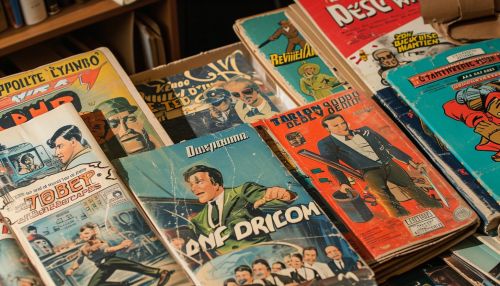Franco-Belgian comics
History
Franco-Belgian comics, also known as Bande Dessinée or BD, is a distinct medium of sequential art that has its roots in the 19th century. The term "Franco-Belgian comics" refers to the comics produced in Belgium and France, two countries with a long history of shared cultural and linguistic ties. The medium has been a significant part of European popular culture since the early 20th century.


The origins of Franco-Belgian comics can be traced back to the European newspaper comic strips of the late 19th and early 20th centuries. These early comics, often humorous in nature, were published in newspapers and magazines and were primarily aimed at a young audience. The first Franco-Belgian comic strip, "Les Pieds Nickelés" by Louis Forton, was published in 1908.
The medium evolved significantly during the interwar period, with the emergence of new genres and styles. The 1930s saw the creation of some of the most iconic Franco-Belgian comics, including "Tintin" by Hergé and "Spirou" by Rob-Vel. These comics introduced the "clear line" style, characterized by strong lines, clear colors, and realistic detail.
The post-war period marked a golden age for Franco-Belgian comics, with the creation of numerous popular series and characters. This period also saw the emergence of adult-oriented comics, which tackled more complex themes and narratives.
Styles and Genres
Franco-Belgian comics encompass a wide range of styles and genres, reflecting the diversity of the medium. The "clear line" style, also known as ligne claire, is one of the most distinctive and influential styles in Franco-Belgian comics. This style is characterized by its simplicity and clarity, with strong lines, clear colors, and a lack of shading or cross-hatching.
In terms of genre, Franco-Belgian comics cover a broad spectrum, from adventure and science fiction to drama and comedy. Some of the most popular Franco-Belgian comics, such as "Tintin" and "Asterix", fall into the adventure genre, featuring heroic characters and exciting narratives. Science fiction is another popular genre, with series like "Valerian and Laureline" and "The Incal" exploring futuristic worlds and concepts.
Influence and Legacy
Franco-Belgian comics have had a significant influence on the global comics industry. The clear line style has been adopted by many artists outside of France and Belgium, and Franco-Belgian comics have been translated into numerous languages and distributed worldwide.
The medium has also had a significant cultural impact, with many Franco-Belgian comics becoming iconic symbols of European popular culture. Characters like Tintin, Asterix, and the Smurfs have become cultural icons, recognized and loved by audiences around the world.
